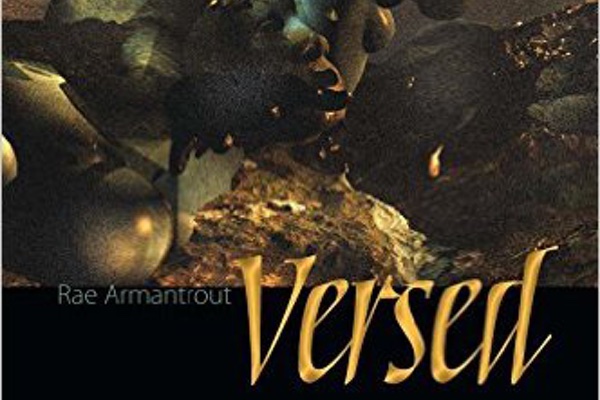Judging by the Blurb
By Joyce Peseroff, Contributing Editor

I’m writing for the first time about a book I haven’t finished yet. My friend Sharon Bryan recommended Rae Armantrout’s Versed, and I’m enjoying a precision as sharp and startling as the plunge of a needle in Armantrout’s spare, tight lines. Who expects “mass market” to follow a colon after the description “Ground cover of pert/green hearts”? “And these hot-pink,/splay petalled pinwheels—/ such toss-offs!” This isn’t Jane Kenyon’s garden, but I still want to be in it.
I usually avoid reading back cover endorsements, bored by the generic superlatives that stud them. But whenever I’m asked to write a blurb, or sentences in a review that might be quoted for one, I try to point readers to what’s important about the book and the writer. In that spirit, I read the grafs on the back cover of Versed. Following a citation from the 2009 National Book Award committee—Armantrout was a finalist— Jeremy Noel-Todd writes, “poetically, Armantrout has always aimed at knowing life by isolating it from narrative. Written under a diagnosis of cancer (‘just called/to fill you in’) Versed is a major and moving addition to a life’s work…”
Wait, is that what “the self-monitoring function/ of each cell” in the title poem refers to? Isn’t “under a diagnosis of cancer” a “narrative”? Doesn’t it raise what writing workshops call the “stakes” for the poem and the book? Enchanted by Armantrout’s use of language from all sources, I wouldn’t take anything in her work as unmediated autobiography. But if a medical crisis informs the book, I’m bound to read it in the context of a human story—stages of grief, stages of life—and feel an additional urgency pressuring the words.

Ah, feeling. The excerpt by Andrew Klubocar reads, “Armantrout’s poetry, though often lyrical, conforms less to the law of lyric voice (with its neoliberal attachment to ‘feeling’) than to the…challenges of the lyric as an aesthetic device.” I feel like I’m back in the sixties and have been called out as “bourgeois.” Why write if not to provoke feeling? Why read poems if not to engage both sensually and emotionally with the deepest impulses of a stranger? I think of Robin Coste Lewis’s “Voyage of the Sable Venus,” which is made up entirely of titles, catalog entries, and descriptions of Western art objects that portray the African female form. It is an aesthetic device meant to make a reader squirm in outrage, horror and shame. It’s as far from the voice of the lyric “I” as a Kaddish prayer. But I remain attached to feelings incited by both, and by currents from those probes Armantrout’s verse sinks beneath my skin.

